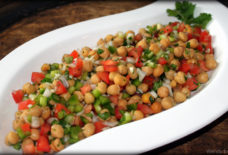SOURCE: THRILLIST
BY: AMANDA PONZION-MOUTTAKI
For centuries, Morocco has been at the crossroads of trade, seeing caravans of salt and gold destined for Europe cross the Sahara, while the East and Europe brought spices and finished goods, respectively. Coupled with geographic diversity and a temperate climate that allows for a year-long growing season, it’s no surprise this stunning country developed a strong culinary tradition.
Moroccan food is often mischaracterized as spicy. It’s not, but the use of many different spices contribute to the “spiced” foods the country is known for. The tasty mixture of sweet and savory is also very common, with combinations like beef and prunes or chicken and raisins served regularly. A common thread that runs through the Moroccan kitchen is the use of one name to describe multiple dishes — you might see tajine listed as a dish, but there are dozens of varieties of tajines. (All worth trying!) Additionally, the concept of nose-to-tail dining is a way of life in Morocco. All parts of an animal are used or eaten, like sheep brain cooked in tomato sauce or grilled liver skewers, a treat and often eaten at holidays like Eid al Adha.
While different regions have their specialities — seafood in the coastal cities, rustic breads and stews near the Atlas Mountains — Morocco’s flavors run deep. What better way to get to know the country than through your palate?


